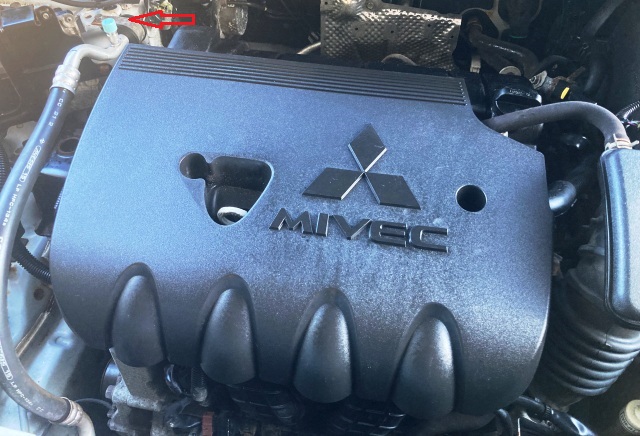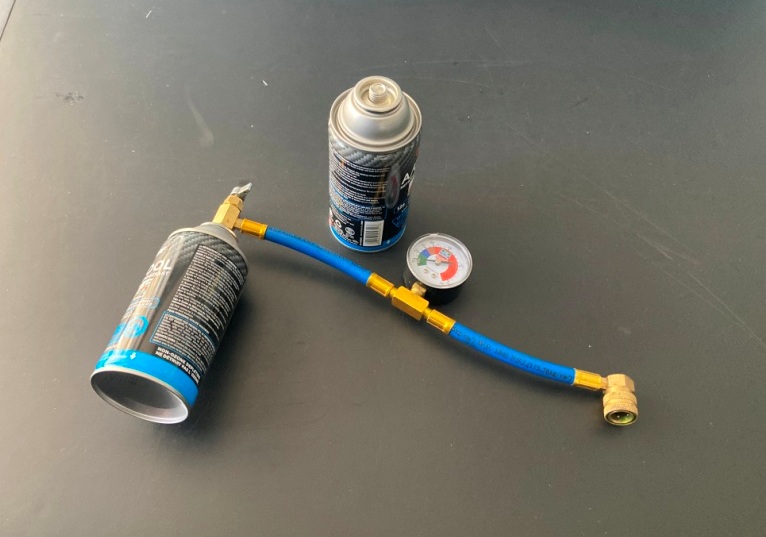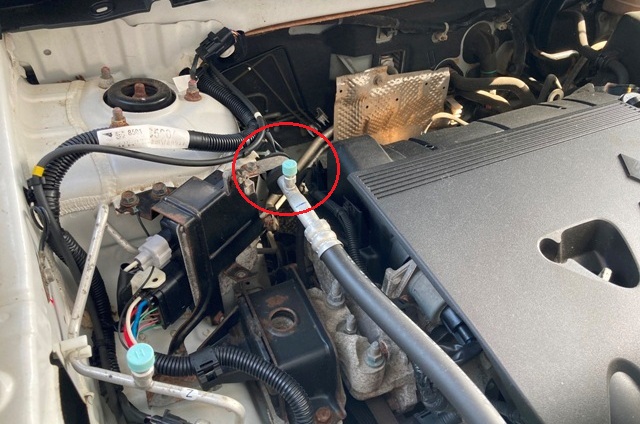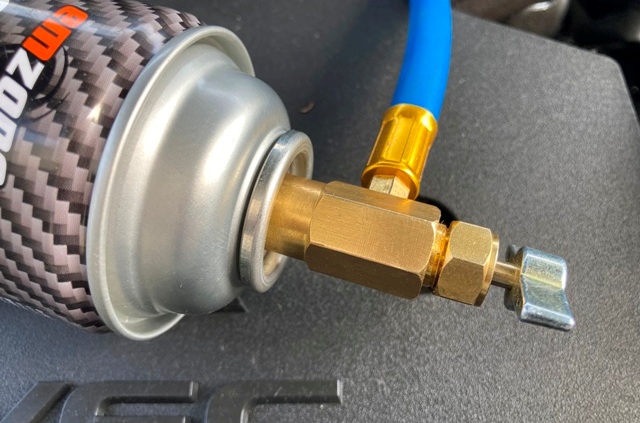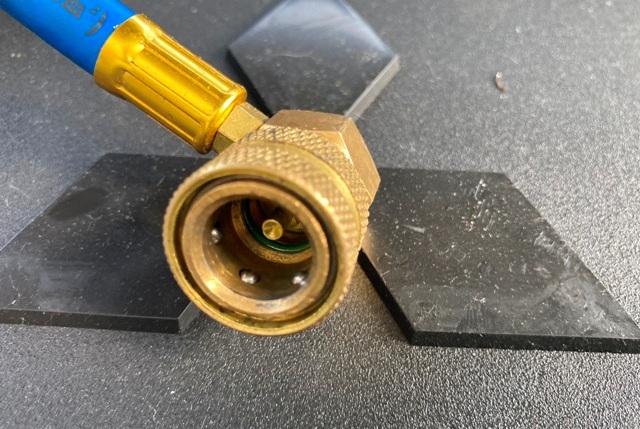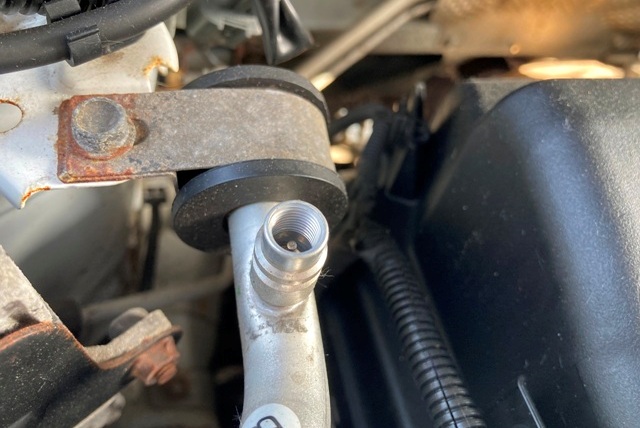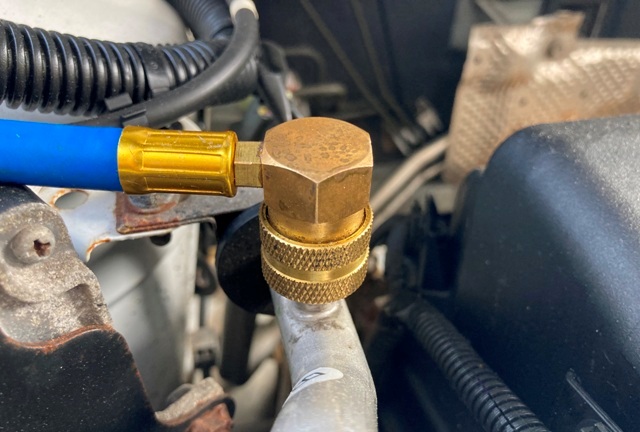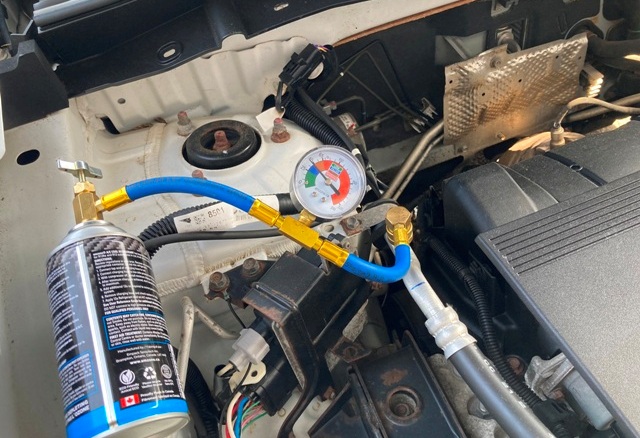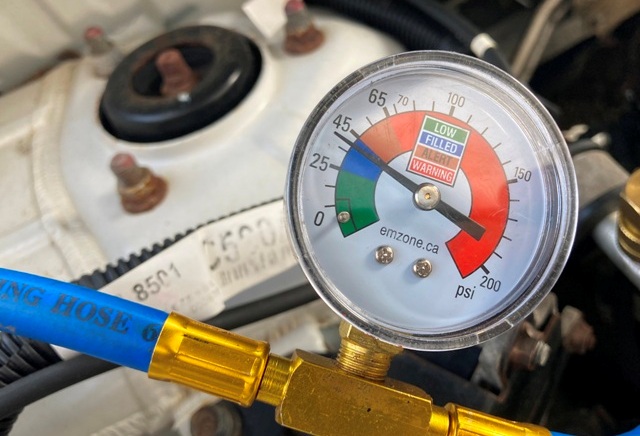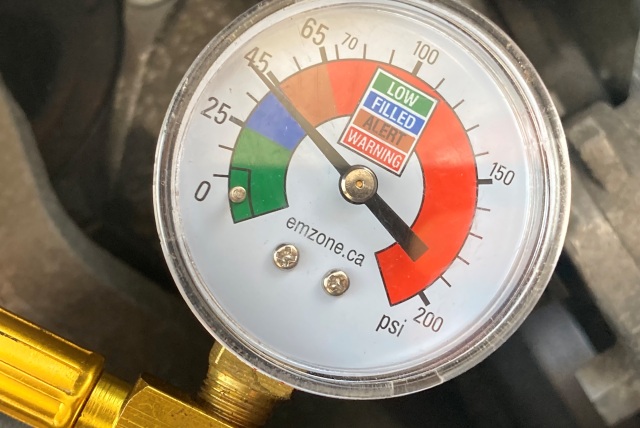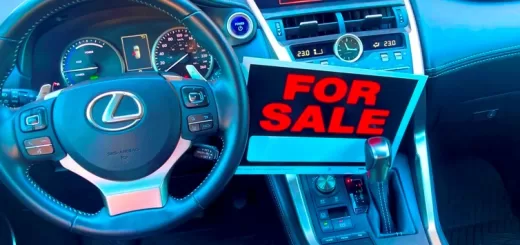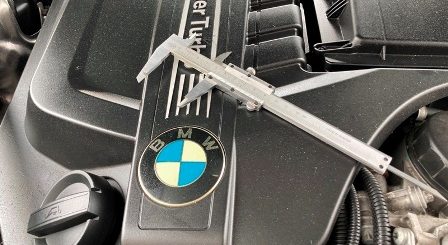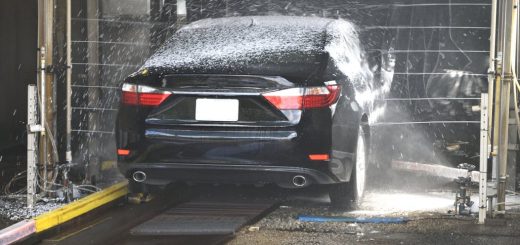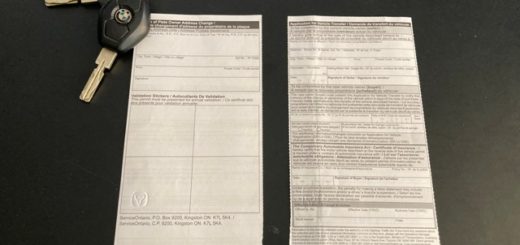How to Recharge Air Conditioning Mitsubishi Outlander
Air Conditioning System Refrigerant Leak
How to recharge air conditioning 2014 Mitsubishi Outlander: While there are several issues which cause air conditioning to malfunction, one common cause is low refrigerant level. Refrigerant does not just disappears.
If your car is low on refrigerant then you have a leak on AC system. Usually, leaks develop on air conditioning seals or condenser.
Recharging air conditioning yourself is usually a short term solution. However, if leak is very small then recharging might hold for months or even longer. On the other hand, if leak is large then recharging will not help as refrigerant will leak again soon after.
2014 Mitsubishi Outlander, 4 cylinder with 2.4L naturally aspirated engine. Recharging procedure is identical for 2014 to 2021 Mitsubishi Outlanders and very similar for 2007 to 2013 models.
Safety First
Be careful when you recharge AC on your car as you will be working close to a running engine.
1- Engine will be hot, stay away don’t burn yourself.
2- Keep your distance from engine pulleys and belts. Its very easy to lose focus and get your hand or clothes caught by spinning pulleys or belts.
3- If you have refrigerant leaking, try to not breathe it and avoid contact with your eyes.
4- Wear gloves and safety glasses. Refrigerant is poisonous if inhaled and will irritate skin and eyes.
5- Use Only low pressure port for recharging. Do not try to fit recharging hose on high pressure port.
6- Read safety label on refrigerant bottle or recharging kit manual if it has one.
Step 1- Buy a AC Recharging Kit
Air conditioning recharge kits are sold almost everywhere, Amazon, Walmart, Canadian Tire, Part Source, to name a few. AC recharge kits usually cost about $50. Kit includes a recharging hose with pressure gauge and tow refrigerant bottles, in case one bottle is not enough.
Step 2- Locate Low Pressure Recharge Port Mitsubishi Outlander
Low pressure port on 2014 Mitsubishi Outlander is situated in a very convenient and easy to reach location. Recharging port is located on top right hand side of engine (image below).
Air conditioning has two ports, Low Pressure port and High Pressure Port. Ports are clearly marked on their caps with L for low and H for high. On image above low pressure port is marked in red and you can clearly see high pressure port located next to it, close to right inner fender.
Identify and Use Only Low Pressure Port to Recharge AC. Do try to connect recharging hose into high pressure port.
Step 3- Air Conditioning Recharge Kit Preparation
Recharging hose has a valve on one end and low pressure port connector on the other. Open recharging valve fully. Take a refrigerant bottle and screw it on recharging hose valve.
Tighten it firmly to prevent leaks. Close valve completely, valve has a pin which will puncture refrigerant bottle to let refrigerant flow. As long as valve stays closed, refrigerant will not leak.
Step 4- Attach Recharging Kit Connector to Low Pressure Port
Engine off. Connector on recharging kit is a lock type, similar to air tools connectors. Connector has a outer ring which moves freely and locks connector on low pressure port valve.
Make sure you identified low pressure port correctly.
Unscrew plastic cap from low pressure recharging valve. Pull outer ring on recharging kit connector backwards and insert connector on low pressure port.
Release connector lock, connector now should be locked on low pressure port. Pull on recharging hose to confirm connector is locked in place. If its not locked then try it again until connector is firmly locked.
Step 5- Check Air Conditioning System Pressure
Look at recharging hose pressure gauge. If you still have a reasonable amount of pressure left in the system then leak is small and recharging will work for while.
If you have zero pressure on AC system then in all likelihood leak is large and refrigerant will leak again after recharging. Nothing to lose on trying to recharge though, you already set up.
Step 6- Recharge Air Conditioning 2014 Mitsubishi Outlander
Start engine and engage air conditioning and set it up on max setting (Cold) and fan at full blast. Be careful and stay away from engine or engine pulleys and belts when recharging.
Open recharging hose valve and shake refrigerant bottle. Refrigerant will now flow into AC system. Compressor should engage when pressure reaches about 20 to 25psi. Keep track of pressure and do not overcharge Air conditioning system.
Step 7- Checking Air Conditioning Pressure
Check pressure on gauge frequently while recharging. Pressure should be checked only when AC compressor is engaged and working.
Do not look at pressure when compressor is not working, you will get a false high reading.
Fully charged air conditioning system is about 40psi. Stop recharging when pressure hit 40psi. Do not charge more than 45psi.
Usually, one bottle is enough but there cases when you need two bottles depending on how large AC system is in your car. To replace refrigerant bottle, turn off engine, close recharging hose valve and disconnect recharging connector from low pressure port.
Unscrew empty bottle. Do it slowly and carefully as its not completely empty and will leak some refrigerant. Install and screw a new bottle on recharging hose valve. Attach recharging connector on low pressure port again, start engine and continue recharging.
Again, fully charged system is about 40psi when compressor is engaged. Stop recharging at 40 psi and do not let pressure go past 45psi. If you overcharge it, air conditioning will not work.
Step 8- Disconnect Recharging Hose
When pressure reaches 40psi with compressor engaged, close recharging hose valve and turn engine off. Disconnect recharging connector from low pressure port. Pull back on connector lock and remove connector from low pressure port. Install low pressure port protective cap.
Listen for any hissing noises, if you hear any noise then refrigerant is leaking. Likely there is a large leak on your AC system. Leak needs to be properly repaired and then system recharged again.
Step 9- Do not Overcharge Air Conditioning System
Overcharging air conditioning system is asking for trouble. An overcharged AC system can damage seals and even destroy your air conditioning compressor. Also, engine in some cases will not be able to idle due to high AC system pressure, engine will turn off while in idle.
Air conditioning system has pressure switch which monitors system pressure. If pressure sensor detects lower or higher than normal pressure it will disengage AC compressor. This is done to prevent compressor damage. Low pressure port valve is similar to air valves in your tires.
Releasing pressure from low pressure port with engine off is dangerous. Refrigerant is under pressure and will spray out with force if pin on low pressure port is pressed with a small screwdriver.
Also, releasing refrigerant in atmosphere is damaging to environment and illegal in most jurisdictions. System need to be vacuumed and recharged by a professional repair facility. You can still drive your with overcharged air conditioning system as long as you do not turn air conditioning on.
Step 10- Check Air Conditioning System Operation
Start the car and engage air conditioning. Check if all vents inside are bringing cold air. Leave your car idling far a minute and then take if for a test drive to confirm AC system is charged and working. Hopefully leak is small and you can get away with recharging it once a year or so.
However, leaks need to be identified and repaired for air conditioning to work at full operating capacity. Recharging AC in this way is just a half measure.
(If you are also looking for a fast and easy solution to sell your car, more here on “How To Sell Your Car Fast” in Ontario).
Comments: If you have any questions or suggestions related to this post or Used Car Toronto in general, don’t hesitate to use comment section below.


